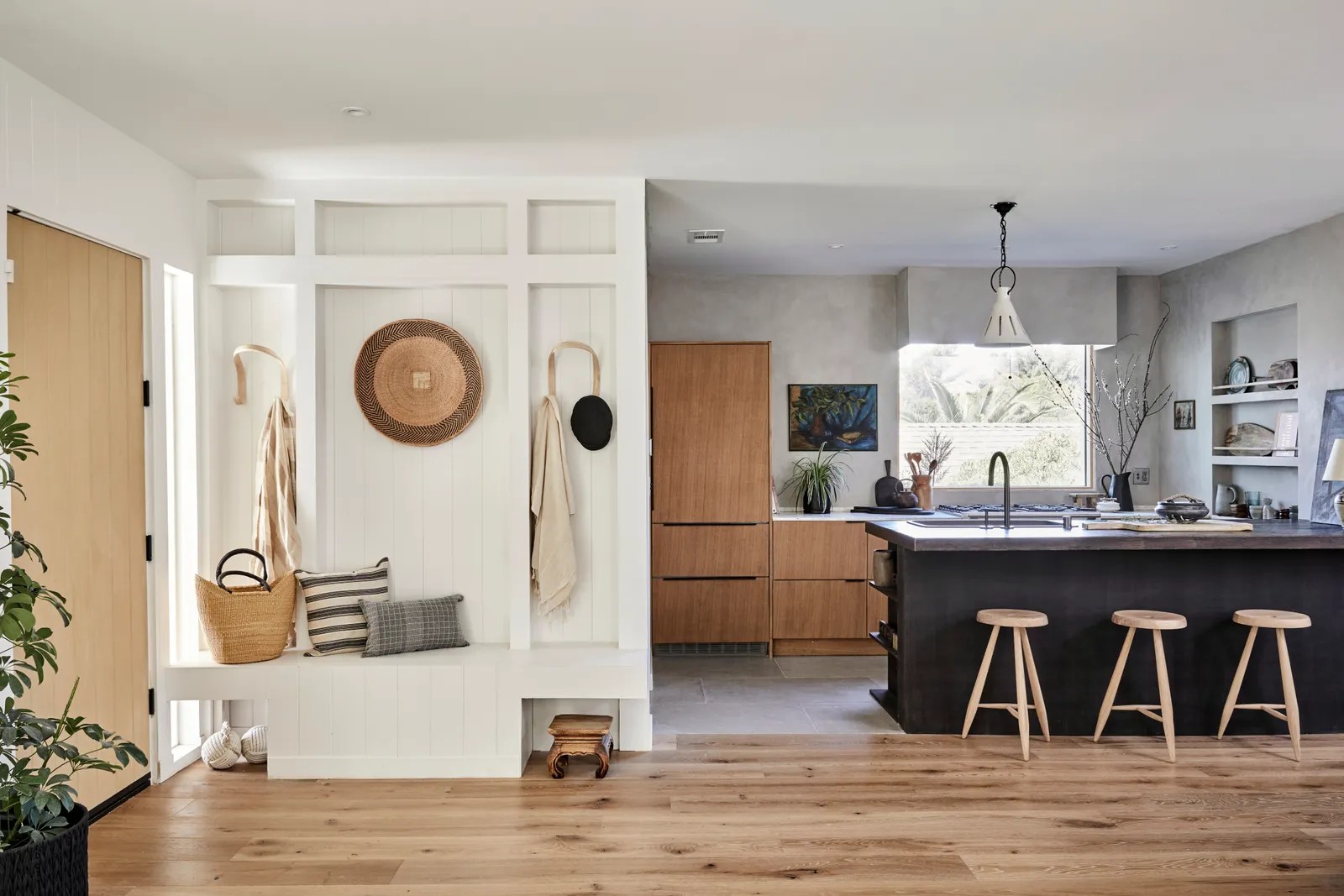In the realm of interior design, where tranquility meets functionality, there lies a style that seamlessly blends the minimalist essence of Scandinavia with the warmth and tranquility of Japan: Japandi. This captivating fusion creates kitchens that transcend mere aesthetics, becoming havens of serenity and efficiency. Our comprehensive guide will take you on a journey through the core principles, design elements, and inspirations behind Japandi kitchen design, empowering you to transform your culinary space into a sanctuary of calm and beauty.
Unveiling the Essence of Japandi
Japandi design is more than just a trend; it’s a philosophy. It’s the art of curating a space that nurtures both the body and soul, a place where the simple act of cooking becomes a meditative experience. Imagine a kitchen bathed in natural light, where warm wood whispers tales of ancient forests, and sleek lines echo a modern sensibility. This is the magic of Japandi – a harmonious marriage of Scandinavian minimalism and Japanese craftsmanship.
Key Elements of a Japandi Kitchen
The beauty of Japandi lies in its delicate balance. It’s about embracing the imperfect perfection of wabi-sabi, celebrating the natural world, and creating a space that is both visually stunning and deeply functional. Here are the key elements that define a Japandi kitchen:
Natural Materials: The Heart of Japandi
Natural materials are the foundation of any Japandi space. Think warm, light woods like oak and maple, contrasted with the cool, grounding presence of stone and concrete. Bamboo, with its organic texture and sustainable nature, also finds a welcome home in the Japandi kitchen. These materials not only create a visually appealing aesthetic but also contribute to a healthier indoor environment.
The Japandi Color Palette: A Symphony of Neutrals
Imagine a canvas of soft whites, gentle grays, and warm beiges. This is the essence of the Japandi color palette – a serene backdrop that allows natural light to dance and play. Subtle accents of earthy tones, such as muted greens, deep browns, and soft blacks, add depth and personality without disrupting the overall sense of calm. Pops of color are used sparingly, perhaps in a carefully chosen piece of artwork or a vibrant green plant.
Minimalism and Functionality: Embracing the Essential
Clutter is the antithesis of Japandi. Every item has a purpose, every detail carefully considered. Streamlined cabinetry, uncluttered countertops, and hidden storage solutions create a sense of spaciousness and tranquility. Functionality is paramount. Think drawers that glide open effortlessly, revealing perfectly organized compartments, and integrated appliances that blend seamlessly into the overall design. This emphasis on efficiency makes the kitchen a joy to work in, promoting a sense of calm and control.
The Art of Contrast: Balancing Light and Shadow
Japandi design masterfully plays with contrast. The interplay of light and dark, smooth and textured, creates a visually dynamic space that is both calming and engaging. Light-colored wood floors might be paired with darker cabinetry, while a smooth marble countertop could be accented by rough-hewn wooden stools. This balance adds depth and prevents the space from feeling too sterile or monotonous.
Decorative Accents: Minimalist Expressions
Decorative elements in a Japandi kitchen are minimal but meaningful. They might draw inspiration from Japanese aesthetics, such as a delicate tea set displayed on a floating shelf, a piece of minimalist calligraphy art adorning the wall, or a collection of lush green plants adding a touch of life and vibrancy. Each accent is carefully chosen to tell a story, adding a layer of personality without overwhelming the senses.
Natural Light: Embracing the Outdoors
Natural light is a cornerstone of Japandi design. Maximize sunlight by minimizing window treatments or opting for sheer curtains that allow light to filter through. This not only brightens the space but also reinforces the connection with nature, promoting a sense of peace and well-being. Enhance your modern home with sleek and sophisticated interior sliding glass doors that effortlessly merge indoor and outdoor living spaces.
Wabi-Sabi vs. Japandi: A Deeper Dive
While both wabi-sabi and Japandi appreciate simplicity and natural elements, they approach these concepts from different angles. Wabi-sabi is a Japanese philosophy that embraces imperfection and impermanence, finding beauty in the natural cycle of life and decay. Japandi, on the other hand, is a design aesthetic that blends wabi-sabi principles with Scandinavian functionality and hygge, resulting in a space that is both visually appealing and highly practical. While wabi-sabi might celebrate a cracked teacup for its history and unique character, Japandi likely favors a more refined aesthetic, choosing natural materials with a smooth, polished finish.
Implementing Japandi Design: Practical Tips
Creating a Japandi kitchen is about capturing a feeling, not rigidly following rules. It’s a journey of discovery, a process of carefully curating elements that spark joy and bring a sense of peace to your culinary haven. Here are some practical tips to help you embark on your Japandi journey:
- Declutter and Simplify: Start by decluttering your kitchen, keeping only the essentials. This will create a sense of spaciousness and allow you to appreciate the beauty of simplicity.
- Choose Natural Materials: Incorporate warm woods, cool stones, and sustainable materials like bamboo into your design.
- Embrace Neutral Tones: Opt for a neutral color palette with occasional pops of muted color or earthy tones.
- Maximize Natural Light: Keep window treatments minimal or choose sheer curtains to allow sunlight to flood the space.
- Incorporate Plants: Add greenery to purify the air and create a more calming atmosphere.
- Focus on Functionality: Choose furniture and appliances that are both beautiful and practical. Invest in clever storage solutions to maintain a clutter-free environment.
- Add Personal Touches: Incorporate handcrafted items or decorative accents that reflect your personal style and tell a story.
The Future of Japandi
Japandi design is not static; it’s a living, breathing concept that continues to evolve. Designers are constantly experimenting with new materials and interpretations, pushing the boundaries of this fascinating fusion. What constitutes “Japandi” may continue to evolve as designers explore new ways to blend these two distinct yet complementary aesthetics. It will be interesting to see how the style adapts and changes over time, reflecting evolving trends and cultural influences.
By understanding the core principles of Japandi design and incorporating these elements into your kitchen, you can create a space that is not only visually stunning but also promotes a sense of tranquility, balance, and well-being. It’s a design philosophy that embraces the beauty of simplicity and the power of nature, creating a space that feels both timeless and utterly modern.
- Marble Countertops Cost: What Factors Impact the Total Price? - January 2, 2026
- Small Corner Kitchen Ideas: Maximize Style In Tight Spaces - January 1, 2026
- Kitchen Counter Corner Ideas: Style Your Awkward Angles Now - December 31, 2025










